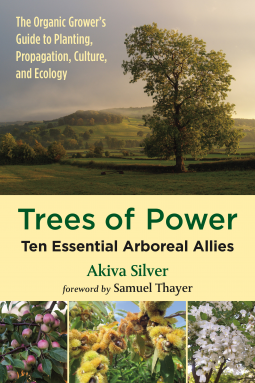
Trees of Power
Ten Essential Arboreal Allies
by Akiva Silver
This title was previously available on NetGalley and is now archived.
Send NetGalley books directly to your Kindle or Kindle app
1
To read on a Kindle or Kindle app, please add kindle@netgalley.com as an approved email address to receive files in your Amazon account. Click here for step-by-step instructions.
2
Also find your Kindle email address within your Amazon account, and enter it here.
Pub Date Mar 06 2019 | Archive Date Mar 01 2019
Chelsea Green Publishing | Chelsea Green
Talking about this book? Use #TreesOfPower #NetGalley. More hashtag tips!
Description
Trees are not only a magisterial part of the natural landscape, they are our allies in maintaining a healthy planet. Partnering with trees allows us to build soil, enhance biodiversity, increase wildlife populations, grow food and medicine, and pull carbon out of the atmosphere. In his new book, Trees of Power, Akiva Silver shares a step-by-step path toward working with these arboreal allies, from propagation and planting, to understanding the specific traits of ten of our most important tree species that have multiple benefits for humans, animals, and nature alike.
In Trees of Power you'll learn the most important concepts necessary for success with perennial woody plants, and the time-honored techniques to propagate trees--whether by seed, grafting, layering, or with cuttings--that make it easy for anyone to increase their stock of trees, simply and inexpensively. Ten chapters focus on the specific ecology, culture, and uses of these "power trees," including the chestnut, apple, ash, hickory, beech, black locust, and more.
Silver's combination of hands-on experience and sincere exuberance for the natural word will inspire a new generation of tree stewards wishing to create a lasting legacy for future generations, while appealing to gardeners, homesteaders, environmentalists, educators, and farmers, or anyone who feels a deep appreciation for these magnificent plants.
Akiva Silver owns and operates Twisted Tree Farm, a homestead, nut orchard, and nursery near the Finger Lakes Region of New York. There he grows around 20,000 trees per year that are raised naturally without synthetic fertilizers, pesticides, or herbicides. Trees of Power is his first book.
Available Editions
| EDITION | Other Format |
| ISBN | 9781603588416 |
| PRICE | $29.95 (USD) |
Average rating from 5 members
Readers who liked this book also liked:
Megan Ashley Smith, LCMHC, NCC
Health, Mind & Body, Nonfiction (Adult), Self-Help
Todd Hagopian
Business, Leadership, Finance, Nonfiction (Adult), Professional & Technical
Noam Chomsky; José Mujica; Saúl Alvídrez
Essays & Collections, Multicultural Interest, Politics & Current Affairs



















